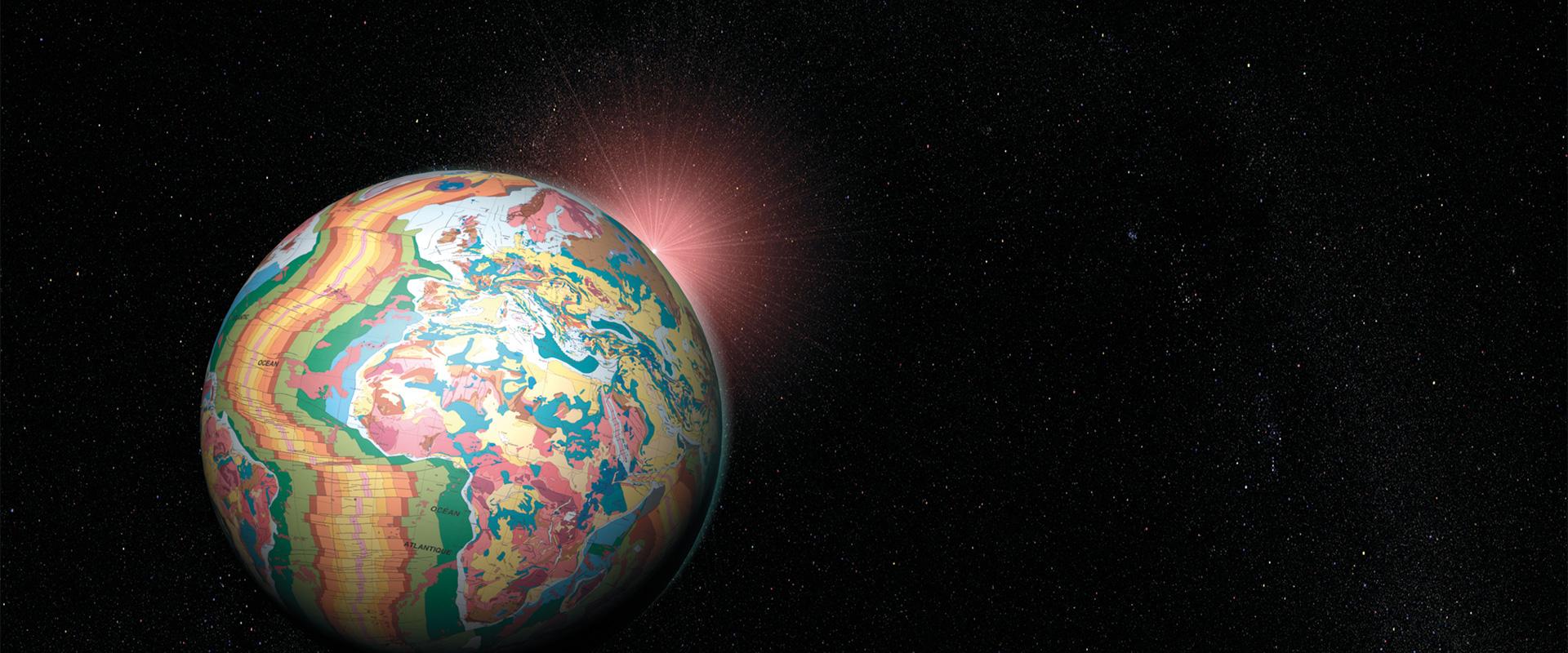4 questions for Pierrick Graviou cp-author of the Grand livre animé de la Terre
Transcription
4 questions for Pierrick Graviou Geologist and Author If you could sum up Earth in a few words, what would they be?
I would say core, mantle, crust, water and gas. Let me explain. For me, the Earth is like a giant fruit. A kind of peach, with the core in the centre covered by the flesh, the pulp, which corresponds to Earth's mantle, where magma is formed. Magma is at the origin of tectonic plates and continental drift and also volcanism on Earth's surface. The skin of the fruit corresponds to Earth's crust. In other words, the continents and the ocean floor. And on top of the fruit, there is another layer that scientists call the hydrosphere. It's water. Rivers are part of this hydrosphere, seas and oceans too. The final layer is the atmosphere. It is made up of gas, mainly nitrogen, oxygen, but carbon dioxide too, a greenhouse gas, which we hear about all time and which causes problems.
The book is for children of what age?
I would say from 7 to 77, like the Tintin books. To be more precise, I'd say from 5 or 6 upwards. At that age, children don't know how to read, but a pop-up book is quite fragile. You have to pull out and push in cut-outs. So it's interesting to discover this book with an adult. Like a bedtime story. But I know teachers who use the book in class at high school. I also know friends, parents, grandparents, even geologists, who enjoy, without children, reading this book on their own.
When you're 6, time is abstract. How do you explain Gran hasn't met dinosaurs?
What an interesting question! You don't explain it. That's the interest of this book. An adult, a parent or grandparent, will explain, in their own words, the notion of time to children. There are 2 different times. Man's time: days, months, years, parents' or grandparents' lifetimes, maybe prehistoric times too. Earth's timescale is measured in millions of years. And that is a notion that is so abstract that not only children, but all humans are incapable of understanding it. I'm a geologist and I'll be 65 soon, I work with the concept of millions and billions of years every day. But I am incapable of explaining what a million years is.
Does the book mention environmental subjects like climate change?
Of course. I mentioned it at the start of the interview. After the core of Earth, the mantle, the tectonic plates, volcanism and so on, it talks about Earth's surface. First the water cycle, the seas and oceans, then the atmosphere, meteorology. And then it talks about energy resources, subsurface resources, non-renewable resources, like coal, oil, that are sources of dirty energy. And at the end of the book, I make the reader more aware, the young reader, about climate change and renewable resources such as wind power and solar energy. There is even a small wind turbine that can be turned by hand. A movable illustration to end this book on climate change.







